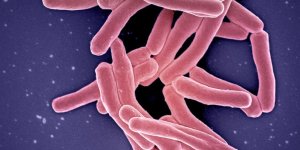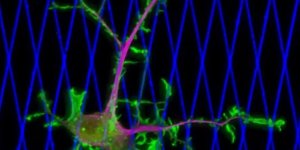| Health / Health News |
Why seven in ten women experience pregnancy sickness
A Cambridge-led study has shown why many women experience nausea and vomiting during pregnancy – and why some women, including the then Duchess of Cambridge, become so sick they need to be admitted to hospital.

Why seven in ten women experience pregnancy sickness. Photo: Anna Hecker/Unsplash
The culprit is a hormone produced by the fetus – a protein known as GDF15. But how sick the mother feels depends on a combination of how much of the hormone is produced by the fetus and how much exposure the mother had to this hormone before becoming pregnant.
The discovery points to a potential way to prevent pregnancy sickness by exposing mothers to GDF15 ahead of pregnancy to build up their resilience.
As many as seven in ten pregnancies are affected by nausea and vomiting. In some women – thought to be between one and three in 100 pregnancies – it can be severe, even threatening the life of the fetus and the mother and requiring intravenous fluid replacement to prevent dangerous levels of dehydration.
So-called hyperemesis gravidarum is the commonest cause of admission to hospital of women in the first three months of pregnancy.
Although some therapies exist to treat pregnancy sickness and are at least partially effective, widespread ignorance of the disorder compounded by fear of using medication in pregnancy mean that many women with this condition are inadequately treated.
Until recently, the cause of pregnancy sickness was entirely unknown. Recently, some evidence, from biochemical and genetic studies has suggested that it might relate to the production by the placenta of the hormone GDF15, which acts on the mother’s brain to cause her to feel nauseous and vomit.
Now, an international study, involving scientists at the University of Cambridge and researchers in Scotland, the USA and Sri Lanka, has made a major advance in understanding the role of GDF15 in pregnancy sickness, including hyperemesis gravidarum.
The team studied data from women recruited to a number of studies. They used a combination of approaches including human genetics, new ways of measuring hormones in pregnant women’s blood, and studies in cells and mice.
The researchers showed that the degree of nausea and vomiting that a woman experiences in pregnancy is directly related to both the amount of GDF15 made by the fetal part of placenta and sent into her bloodstream, and how sensitive she is to the nauseating effect of this hormone.
GDF15 is made at low levels in all tissues outside of pregnancy. How sensitive the mother is to the hormone during pregnancy is influenced by how much of it she was exposed to prior to pregnancy – women with normally low levels of GDF15 in blood have a higher risk of developing severe nausea and vomiting in pregnancy.
The team found that a rare genetic variant that puts women at a much greater risk of hyperemesis gravidarum was associated with lower levels of the hormone in the blood and tissues outside of pregnancy. Similarly, women with the inherited blood disorder beta thalassemia, which causes them to have naturally very high levels of GDF15 prior to pregnancy, experience little or no nausea or vomiting.
Professor Sir Stephen O’Rahilly, Co-Director of the Institute of Metabolic Science and Director of the Medical Research Council Metabolic Diseases Unit at the University of Cambridge, who led the collaboration, said: “Most women who become pregnant will experience nausea and sickness at some point, and while this is not pleasant, for some women it can be much worse – they’ll become so sick they require treatment and even hospitalisation. We now know why.
"The baby growing in the womb is producing a hormone at levels the mother is not used to. The more sensitive she is to this hormone, the sicker she will become."
Mice exposed to acute, high levels of GDF15 showed signs of loss of appetite, suggesting that they were experiencing nausea, but mice treated with a long-acting form of GDF15 did not show similar behaviour when exposed to acute levels of the hormone.
The researchers believe that building up a woman’s tolerance to the hormone prior to pregnancy could hold the key to preventing sickness.
YOU MAY ALSO LIKE





